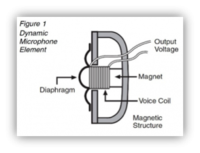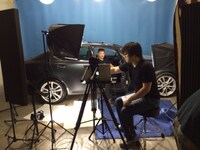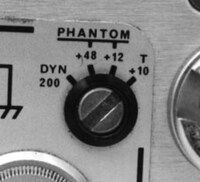 Audio Technica answers their Blog Question of the Week, "What is a dynamic microphone?"
Audio Technica answers their Blog Question of the Week, "What is a dynamic microphone?"
The most common type of dynamic microphone is moving-coil (see Figure 1), which operates on electromagnetic induction. Moving-coil microphones utilize a diaphragm that, when moved by changing sound pressure, also moves the voice coil, causing electrical current to flow. As the diaphragm moves, the attached magnetic voice coil creates a positive charge and when the diaphragm rebounds from the voice coil, a negative charge is created. This is translated into positive and negative electrical current.
Another way to think of a dynamic microphone is as the reverse of a speaker. A speaker takes in electrical current that moves the speaker cone (diaphragm) and its voice coil. This vibrating movement of the speaker cone results in acoustic sound pressure – aka sound. The concept is the same as that of a dynamic microphone, just in reverse.
Dynamic microphones are rugged, reliable, and are often used in live applications where sound reinforcement is needed. Proper care and maintenance will extend the life and performance of dynamic microphones. These mics do not require any additional power or batteries for operation. Output levels are properly matched to work directly with most microphone level inputs for good signal-to-noise ratio. They are capable of smooth, extended frequency response for accurate reproduction of vocals and instruments. The frequency characteristic can also be tailored to suit particular applications.
This is an excerpt from the Audio-Technica blog found at:
http://blog.audio-technica.com/audio-solutions-question-of-the-week-what-are-the-differences-between-the-microphones-that-audio-technica-offers/#more-2305



